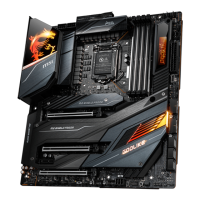
Do you have a question about the MSI MEG Z490 GODLIKE and is the answer not in the manual?
| Audio chip | Realtek ALC1200 |
|---|---|
| Cooling type | Passive |
| Certification | CE |
| Component for | PC |
| Power source type | ATX |
| Motherboard chipset | Intel Z490 |
| Audio output channels | 7.1 channels |
| Motherboard form factor | Extended ATX |
| Number of mounting holes | 9 |
| Motherboard chipset family | Intel |
| Windows operating systems supported | Windows 10 |
| Processor socket | LGA 1200 (Socket H5) |
| Compatible processor series | Intel® Core™ i9 |
| Maximum number of SMP processors | 1 |
| Non-ECC | Yes |
| Memory channels | Dual-channel |
| Memory slots type | DIMM |
| Number of memory slots | 4 |
| Supported memory types | DDR4-SDRAM |
| Maximum internal memory | 128 GB |
| Supported memory clock speeds | 2133, 2400, 2666, 2933, 3000, 3200, 3300, 3333, 3400, 3466, 3600, 3733, 3866, 4000, 4133, 4200, 4266, 4300, 4400, 4800 MHz |
| PCI Express x16 (Gen 3.x) slots | 3 |
| RAID levels | 0, 1, 5, 10 |
| Number of HDDs supported | 6 |
| Supported storage drive types | HDD & SSD |
| Supported storage drive interfaces | M.2, SATA |
| DirectX version | 12.0 |
| Maximum resolution | 4096 x 2304 pixels |
| Number of displays supported | 2 |
| Parallel processing technology support | 2-Way SLI, 3-Way CrossFireX |
| Cables included | SATA |
| USB connector type | USB Type-A, USB Type-C |
| USB 2.0 ports quantity | USB 2.0 ports have a data transmission speed of 480 Mbps, and are backwards compatible with USB 1.1 ports. You can connect all kinds of peripheral devices to them. |
| USB 3.2 Gen 2 (3.1 Gen 2) Type-C ports quantity | 0 |
| LAN controller | Intel I219-V, Realtek RTL8125-CG |
| Wi-Fi standards | 802.11a, 802.11b, 802.11g, Wi-Fi 4 (802.11n), Wi-Fi 5 (802.11ac), Wi-Fi 6 (802.11ax) |
| Bluetooth version | 5.1 |
| Ethernet interface type | 2.5 Gigabit Ethernet |
| BIOS type | - |
| Harmonized System (HS) code | 84733020 |
| Width | - mm |
|---|
Detailed guide for installing the CPU into the LGA 1200 socket.
Instructions for installing DDR4 memory modules.
Details on PCIe slot bandwidth and configuration.
Instructions for installing M.2 modules into the slots.
Step-by-step guide for installing the M.2 expansion card.
Connecting SATA devices and front panel components.
Details on ATX and PCIe power connectors.
Details on PWM/DC fan connectors and their functions.
Resetting BIOS and connecting power/reset buttons.
Displaying system information and status on the dashboard.
Using LED_SW1 for control and understanding Debug Code LED.
Reference table for SEC, SEC Error, and PEI Progress Codes.
Step-by-step guide for installing Windows 10 OS.
Procedure for installing essential motherboard drivers.
Benefits of UEFI BIOS and incompatible scenarios.
Overview of BIOS setup and function key mappings.
Methods for resetting BIOS and updating firmware.
Configuring frequencies and voltages for overclocking.
Using M-FLASH to update BIOS via USB drive.
Managing and saving overclocking profiles.
Monitoring system voltages and adjusting fan speeds.
Step-by-step guide for creating a RAID volume.
Procedure for deleting a RAID volume and its data.
Converting RAID volumes back to individual non-RAID disks.
Restoring data redundancy after a drive failure.
Step-by-step guide for installing Intel Optane memory modules.
Procedure for disabling and removing Optane memory.
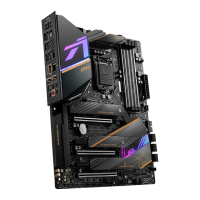
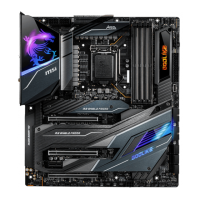
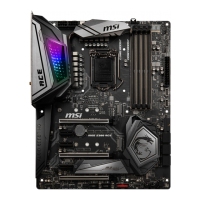
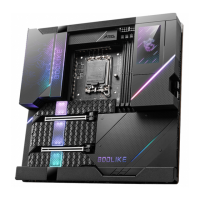
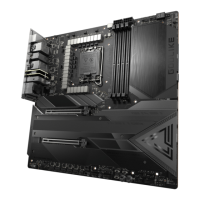
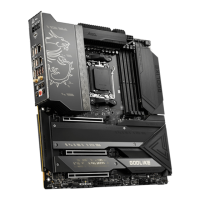
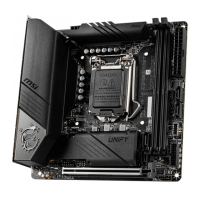
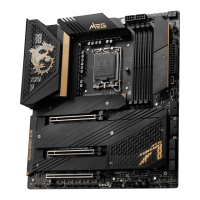
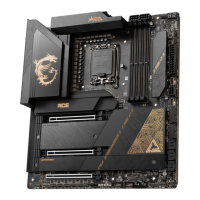
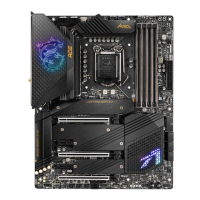
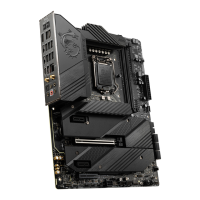

